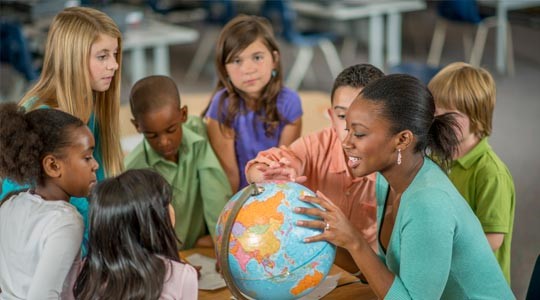Fostering cultural awareness in the classroom is essential for creating an inclusive and enriching learning environment. When students develop an understanding and appreciation of different cultures, it not only promotes diversity but also prepares them for a globalized society. This article will explore seven effective strategies to create cultural awareness in the classroom, empowering educators to cultivate a culturally responsive and engaging educational experience.
Understanding Cultural Awareness
Before delving into the strategies, it’s crucial to grasp the concept of cultural awareness. Cultural awareness refers to the ability to recognize, respect, and appreciate the values, traditions, and perspectives of different cultures. It involves understanding that cultural differences exist and embracing diversity as a valuable asset. By cultivating cultural awareness, educators can facilitate an inclusive environment that nurtures students’ respect, empathy, and understanding towards others.
Benefits of Cultural Awareness in the Classroom
- Promotes Inclusion and Diversity
- Embracing cultural diversity in the classroom creates a sense of belonging and inclusivity for students from various backgrounds.
- It helps dismantle stereotypes and biases, fostering a safe and supportive learning environment.
- Fosters Respect and Empathy
- Cultural awareness cultivates respect and empathy by encouraging students to value and appreciate different cultural perspectives.
- Students develop a broader understanding of the world and become more open-minded individuals.
- Enhances Learning and Critical Thinking
- Exposure to diverse cultures expands students’ knowledge base and enhances their critical thinking skills.
- It encourages them to explore different viewpoints, challenge assumptions, and think critically about global issues.
- Improves Communication and Collaboration
- Cultural awareness fosters effective communication and collaboration among students from diverse backgrounds.
- Students learn to navigate cultural differences, listen actively, and communicate respectfully, promoting stronger relationships.
- Prepares Students for the Globalized World
- In today’s interconnected world, cultural awareness equips students with the skills needed to thrive in a globalized society.
- It prepares them for future careers that require intercultural competence and adaptability.
Strategies to Create Cultural Awareness
- Incorporate Multicultural Content
- Infuse diverse cultural content into the curriculum, including literature, history, and art from different cultures.
- This exposes students to a wide range of perspectives and fosters an appreciation for cultural diversity.
- Celebrate Cultural Festivals and Events
- Organize celebrations for cultural festivals and events, inviting students to share their cultural traditions and participate in activities.
- This allows students to experience firsthand the richness of different cultures and promotes mutual understanding.
- Invite Guest Speakers from Different Cultures
- Invite guest speakers from diverse cultural backgrounds to share their experiences, traditions, and knowledge with students.
- This provides authentic insights and creates opportunities for students to engage in meaningful cross-cultural exchanges.
- Encourage Cross-Cultural Discussions and Activities
- Facilitate discussions and activities that encourage students to share their cultural perspectives and learn from one another.
- Engage students in group projects that promote collaboration and understanding across cultures.
- Use Technology to Explore Different Cultures
- Utilize technology resources, such as virtual tours, online cultural resources, and video conferences, to explore different cultures.
- Students can engage in interactive activities, virtual exchanges, and research projects that broaden their cultural awareness.
- Foster Student Exchanges and Pen Pal Programs
- Establish connections with schools from different cultural backgrounds to facilitate student exchanges or pen pal programs.
- This enables students to interact directly with peers from other cultures, fostering friendships and cultural understanding.
- Provide Professional Development for Teachers
- Offer professional development opportunities for teachers to enhance their cultural competence and pedagogical strategies.
- Educators can develop a deeper understanding of cultural differences and learn effective ways to create culturally inclusive classrooms.
Conclusion
Creating cultural awareness in the classroom is a transformative approach to education. By embracing diversity and fostering cultural understanding, educators empower students to become global citizens who appreciate and respect different cultures. Through the strategies mentioned, teachers can create an inclusive and engaging learning environment that prepares students for the multicultural world they will navigate. By valuing cultural diversity, we pave the way for a brighter future.




